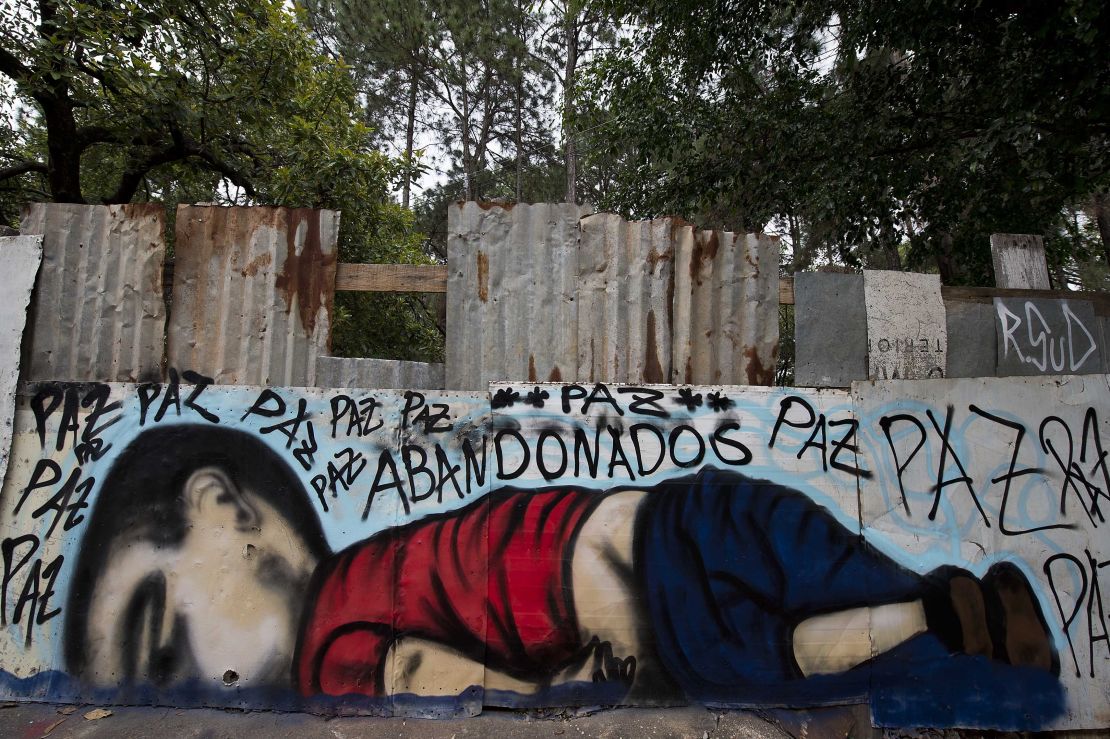Story highlights
New photo shows Chinese artist and activist Ai Weiwei pose as drowned Syrian child
Ai tied emotions he felt during the shoot to ones he felt during the 2008 Sichuan earthquake
This winter, the artist has spent time in Lesbos documenting migrants' journeys
The shocking image of Alan Kurdi, the three-year-old toddler who drowned off a Turkish beach last year in an attempt to flee Syria, both humanized the Syrian refugee crisis and sparked international outrage.
Ai Weiwei won’t let the public forget it. Over the weekend, a photo emerged of China’s most famous dissident artist imitating Kurdi’s dead body.
The photo was shot by Rohit Chawla for an upcoming issue of one of India’s largest news publications – India Today – as part of an article on the artist.
It was unveiled at last weekend’s India Art Fair, in an exhibition entitled “The Artists,” which displayed photographs of artists from the publication’s archive. The image quickly went viral on social media.
Story behind the photo
“It’s an idea that came quite spontaneously,” Ai told CNN, of the concept behind the black and white photo.
“The photographer and journalist asked me to pose for a photo near the beach [in Lesbos] and to close my eyes. We had talked about the image of the boy, so I had that on my mind.”
For Ai, posing for the photograph – in a similar position – felt particularly powerful.

“You see so many children come off these boats. They are like angels – they are the most vulnerable. You can see the world has put them in extreme, hopeless conditions. There are two worlds – a world of adults and a world of babies, and they are not connected.
“That feeling happened in the 2008 Sichuan earthquake. When I stood on the earthquake gravel. Under my feet, there were hundreds, thousands of young students [buried beneath] those ‘tofu’ buildings.” Buildings were nicknamed ‘tofu’ structures in Mandarin, for their low quality, shoddy nature.
“I was standing there and I could feel my body shaking with the wind – you feel death in the wind. You are taken by some kind of emotions that you can only have when you are there. So for me to be in the same position [as Kurdi], is to suggest our condition can be so far from human concerns in today’s politics.”
Documenting influx of migrants in Lesbos
Since December, Ai has spent substantial time in Lesbos – the small Greek island which last year registered at least 450,000 refugees. For two weeks, he made a daily journey to the beach at dawn, and watched boats carrying refugees begin to line the horizon. He would capture photos on his Instagram.
“I would put all my jackets on and it was so cold – the wind feels like it passes through your body. Then, try to imagine people in the ocean. When the boats come in, those people cannot step out, their legs are frozen, often wet, and many people get carried by volunteers because their legs cannot move.”
When asked what sort of works, installations and performance pieces the public might expect of the outspoken political activist, Ai seems at a loss.
“I have no idea. I feel like I kind of get lost. I feel my intention, my instinct, my reactions, are not really so much associated with my experience with art in politics. It really has led me to an unknown area.
Young refugee's body washes ashore in Turkey
“I grew up in difficulty, and many experiences can be compared or the same, but still I cannot connect with those people who risk their lives going through the path of refugees to Europe. And then you see all those politicians that are not really helping, and trying to find all kind of excuses. To refuse and to even put these refugees in more tragic situations.
“When they get off the boats, men and women have tears in their eyes – they think they have made it. Volunteers come from everywhere and hand them a cup of tea, or a piece of chocolate. This small thing can make a kid happy. But Europe is not much more than a blanket, and a little piece of chocolate.”
More trips outside China to document refugee crisis
Ai has become increasingly vocal about the plight of Syrian migrants. Just last week, he canceled an exhibition in Copenhagen, following the Danish government’s passage of a law empowering it to seize valuables from asylum seekers.
And while he doesn’t have immediate plans for specific works, he says he wants to build a studio in Lesbos, staffed by volunteers from Beijing and Berlin (the locations of his two studios), with the idea of doing research and possibly filming a documentary there.
He says he wishes to travel to Syria, Iraq and other places in the Middle East related to the refugee crisis.
However, he recognizes that making trips into and out of China could obstruct his plans, if the authorities intervene. Ai’s passport was returned just last July, four years after Chinese authorities revoked Ai’s travel rights.
“I think I can go back but it’s about uncertainty. I can never answer if that is safe or not.”





















